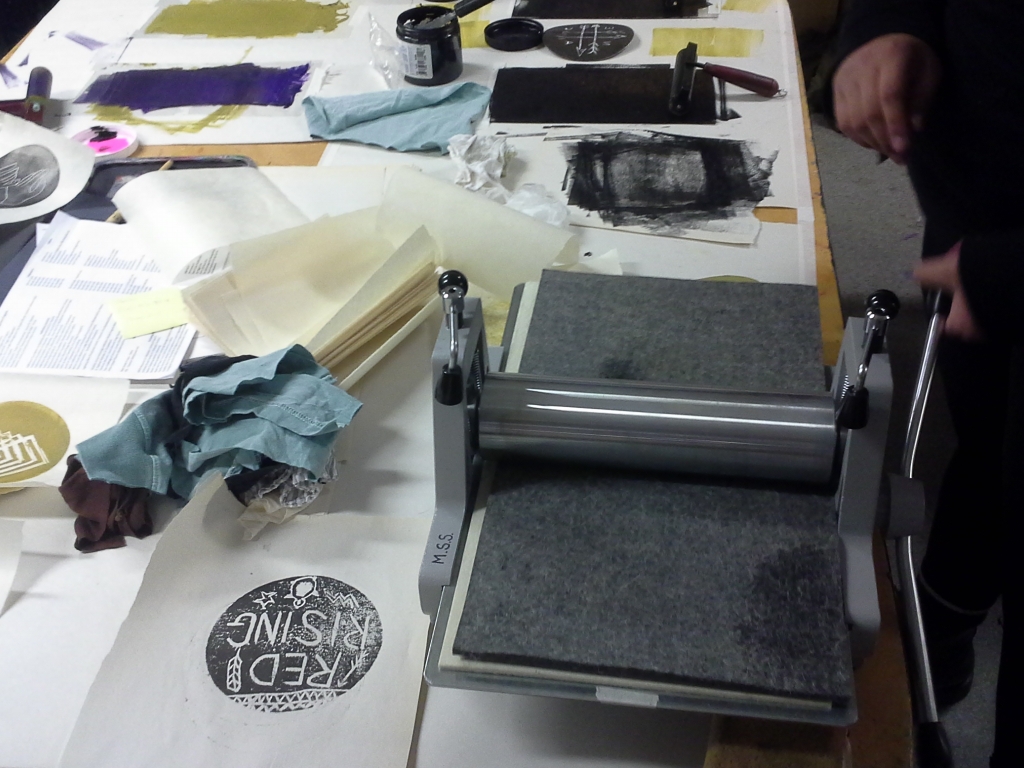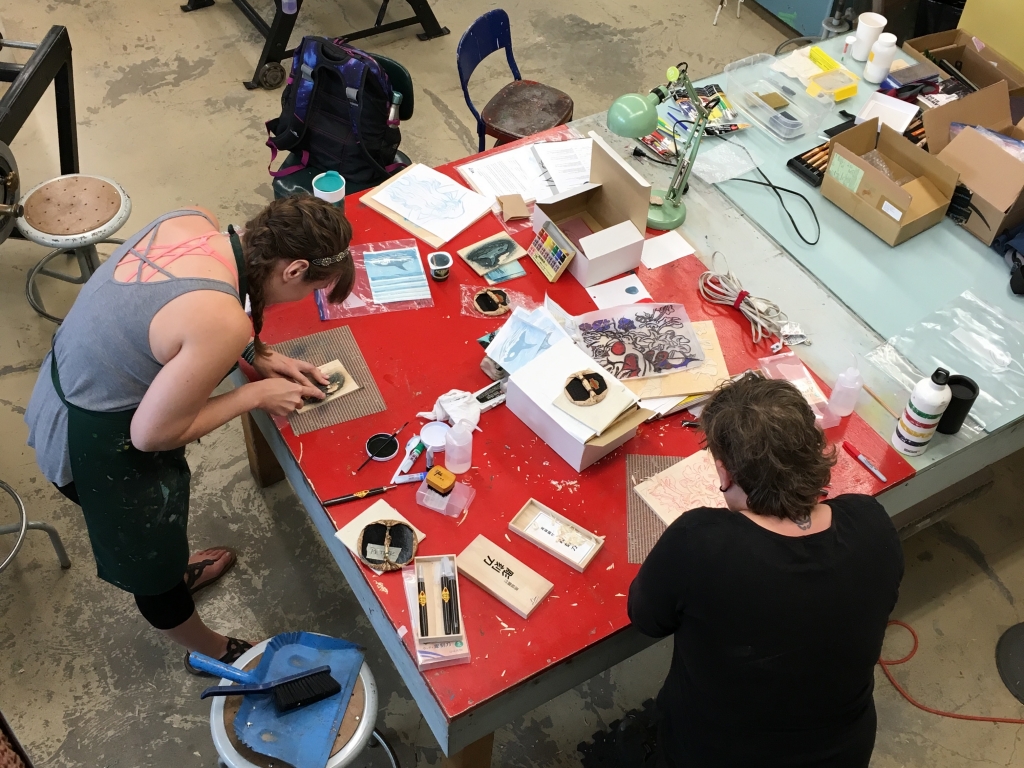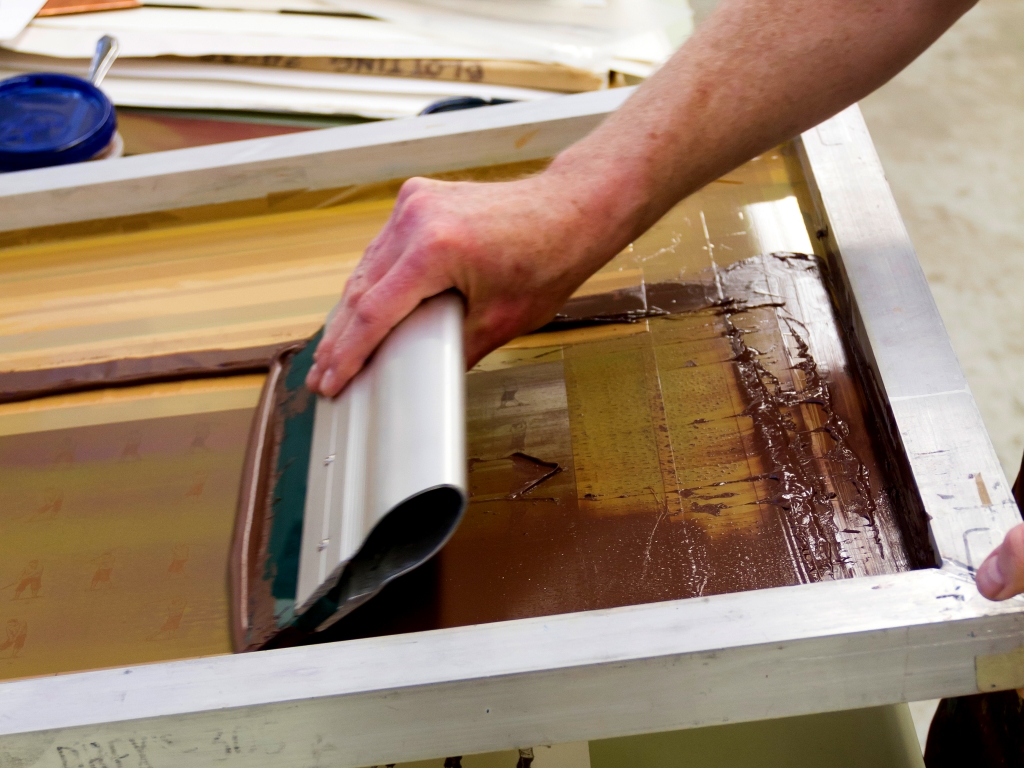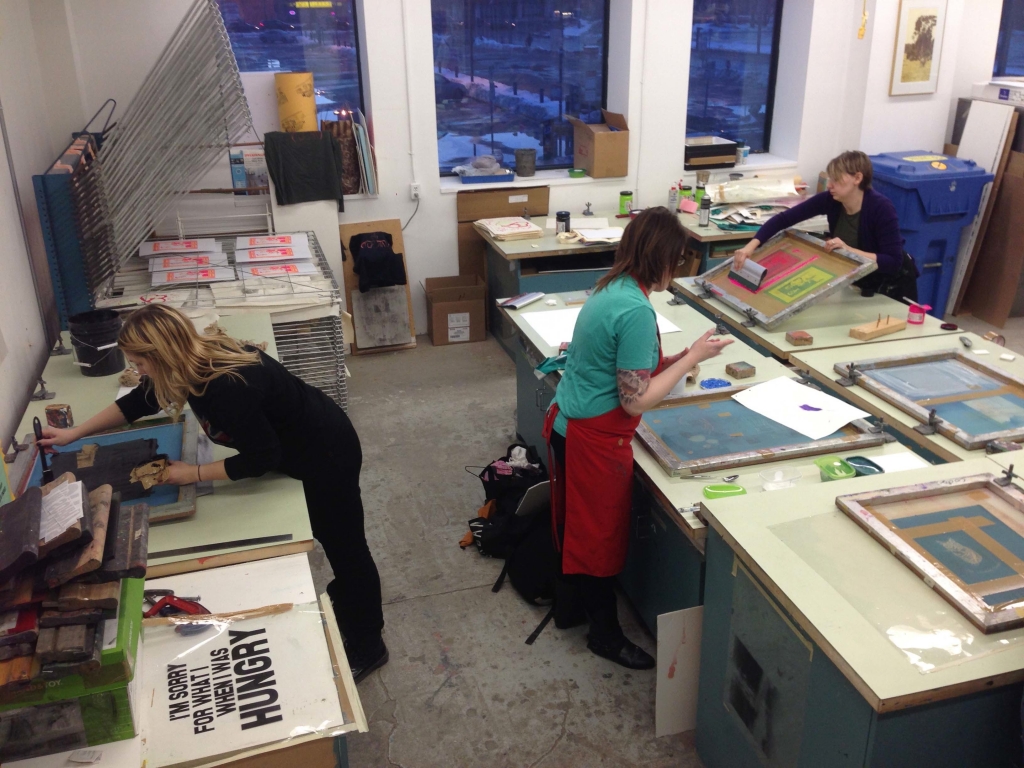What is a Print?
The term print simply refers to a copy which has been reproduced from a master form or template. When used to describe art, the term can encompass a spectrum of items ranging from a one-of-a-kind monoprint, to an inexpensive reproduction of the Mona Lisa, mass produced by the thousands.
What is Printmaking?
Printmaking is the process of using one or more printing techniques to produce original artwork. This should be distinguished from printing that is used to simply reproduce an existing piece. The term’s ambiguity may be illustrated by searching for a “Rembrandt print”: alternately you may find the etchings and engravings that Rembrandt produced by hand in his own lifetime; or you may find a modern, digitally printed reproduction of one of his paintings. Both of these may be called art prints, but only the former would be considered printmaking.
Martha Street Studio exists to provide artists an opportunity to access the specialized facilities and equipment required to practice traditional fine art printmaking, as well as to promote and sell their work and provide education about the various techniques used to produce it.
What is an Edition?
When a printmaker develops an original print, they usually do so with a mind to produce multiple copies of the artwork. The total number of copies that are printed and deemed acceptable is called the edition, and each print in an edition will be marked to certify its authenticity. These markings will commonly be written by hand in pencil on the border or reverse of a print, and typically include the title, signature and edition number, which indicates how many copies were produced. For example, if a print is marked 7/20, it means that it is the seventh copy out a total of twenty copies produced. The editions which are produced at Martha Street Studio, usually hand printed by the artist or a skilled technician, tend to be more limited than the numbers one might find in the mass reproduction market, which may also be signed and numbered. Ultimately, it is worth an art enthusiast’s time to ask questions about how a print was produced so as to clarify some of these ambiguities.
Printmaking Techniques at Martha Street Studio
Intaglio
Intaglio is a family of techniques which involves the etching or engraving of an image into the surface of a printing plate. This is most commonly achieved by coating a metal plate (copper; zinc; aluminum) with a resist ground and then scratching that resist away to expose the metal in a desired manner. The plate is then immersed in an acid-like bath, etching away the metal in those exposed areas. The resist ground is then removed and ink is pulled across the plate, forcing it into the recessed image areas. Finally, the surface is buffed clean and the plate is run through an etching press with dampened paper to create an impression.
Drypoint is a related process in which an image is scratched directly onto the plate using a needle.
Martha Street Studio runs courses in etching using aluminum and/or copper with oil-based inks, and occasionally teaches drypoint on plexiglass as an introduction to intaglio.

Relief
Relief printing involves carving away material from a flat plate or block (most commonly wood or linoleum/vinyl) so that the desired image is left behind on the original surface of the plate. The plate is then inked with a roller so that the surface receives ink while the recessed areas remain clean. The plate may then be run through an etching press to transfer the ink to paper or fabric, or the image may be printed by hand using a simple tool such as a brayer or baren.
Martha Street Studio is equipped for basic relief printing using either oil or water based inks, and occasionally offers workshops on more advanced relief techniques such as reductive linocuts or Japanese woodblock printing.


Monoprints and Monotypes
Monoprints and Monotypes are both techniques which involve the artist applying ink or paint directly to a plate with a roller or brush in such a way that it cannot be duplicated. Once the print is pulled, the plate can be re-inked, but it will fundamentally differ from other prints produced from it. The techniques differ in that monoprints will often have some permanent elements etched into the plate which will be present in all prints pulled from it, whereas a monotype is pulled from a smooth plate. In this way, a monoprint is often one of a varied series sharing some elements, while a monotype is completely unique.
These techniques are produced using the same plates, inks and presses as intaglio, and are taught as an introductory technique in several of Martha Street Studio’s adult and youth courses.

Screen Printing
Screen Printing is a stencilling technique which involves strategically blocking-off areas of a tightly-stretched mesh to achieve a desired design. This screen can then be placed over a surface and ink forced through the open-mesh stencil with a squeegee to create an impression of the design. The image may be printed in this way using any desired colour on a variety of materials, including paper, fabric and wood. When finished, the stencil is dissolved and rinsed from the mesh so that the screen may be reused for another image.
Martha Street Studio practices and teaches screen printing using non-toxic, acrylic-based inks, and creates stencils primarily using a photo exposure system.


Stone Lithography
Stone Lithography involves drawing or painting an image directly onto a slab of fine-grained limestone using greasy pencils or inks. When dry, the stone is put through a chemical process which fuses the image to its surface in such a way that, when wetted with water, oil based ink will be attracted to the image and repelled from the negative spaces when it is applied with a roller. The stone is then air dried and run through a special press to transfer the ink to a dampened piece of paper. Once printing is finished the stone may be ground down, removing the old image embedded in the topmost layer of material and opening the stone’s grain to accept a new drawing.
Martha Street Studio occasionally offers introductory courses in lithography using its selection of small stones, and has several larger ones which may be used by experienced printers in this labor intensive process.

Letterpress
Letterpress printing involves the composing, arranging and securing of individual pieces of lead type and relief image components onto the bed of a press to create a desired design. The raised surface of these pieces may then be inked and printed in a direct impression on paper or cardstock, often resulting in a telltale debossed and stamped appearance. At the end of printing, the type is cleaned and disassembled so that it may be reused for another design.
Martha Street Studio offers introductory courses using its modest letterpress area, which includes several small presses and a selection of vintage lead type and illustration blocks.

Collagraphy
Collagraphy involves affixing a collage of paper, fabric and other materials onto a plate to create a composition. Once completed, the plate is sealed with a varnish and may then be inked and printed as either an intaglio plate, or in relief.
This technique is taught in some of Martha Street Studio’s introductory courses.
Any of these techniques interest you? Check out our courses here!